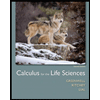rials where the probability is p=0.060 a. Find P(r = 7). b. Find P(r ≤ 6) by using the complement rule.
rials where the probability is p=0.060 a. Find P(r = 7). b. Find P(r ≤ 6) by using the complement rule.
College Algebra
7th Edition
ISBN:9781305115545
Author:James Stewart, Lothar Redlin, Saleem Watson
Publisher:James Stewart, Lothar Redlin, Saleem Watson
Chapter9: Counting And Probability
Section9.3: Binomial Probability
Problem 2E: If a binomial experiment has probability p success, then the probability of failure is...
Related questions
Question

Transcribed Image Text:1. Consider a binomial experiment with n-7 trials where the probability of success on a single trial
is p=0.060
a. Find P(r = 7).
b. Find P(r ≤ 6) by using the complement rule.
2. Richard has just been given a 10-question multiple-choice quiz in his history class. Each question
has five answers, of which only one is correct. Since Richard has not attended class recently, he
doesn't know any of the answers. Assuming that Richard guesses on all 10 questions, find the
indicated probabilities.
a.
What is the probability that he will answer all questions correctly?
What is the probability that he will answer all questions incorrectly?
c. What is the probability that he will answer at least one of the questions correctly?
Compute this probability two ways. First, use the rule for mutually exclusive events and
the probabilities shown in Table 2 of the Appendix. Then use the fact that P(r ≥ 1) =
1-P(r = 0). Compare the two results. Should they be equal? Are they equal? If not,
how do you account for the difference?
d. What is the probability that Richard will answer at least half the questions correctly?
Expert Solution
This question has been solved!
Explore an expertly crafted, step-by-step solution for a thorough understanding of key concepts.
Step by step
Solved in 4 steps with 7 images

Recommended textbooks for you

College Algebra
Algebra
ISBN:
9781305115545
Author:
James Stewart, Lothar Redlin, Saleem Watson
Publisher:
Cengage Learning

Holt Mcdougal Larson Pre-algebra: Student Edition…
Algebra
ISBN:
9780547587776
Author:
HOLT MCDOUGAL
Publisher:
HOLT MCDOUGAL

Calculus For The Life Sciences
Calculus
ISBN:
9780321964038
Author:
GREENWELL, Raymond N., RITCHEY, Nathan P., Lial, Margaret L.
Publisher:
Pearson Addison Wesley,

College Algebra
Algebra
ISBN:
9781305115545
Author:
James Stewart, Lothar Redlin, Saleem Watson
Publisher:
Cengage Learning

Holt Mcdougal Larson Pre-algebra: Student Edition…
Algebra
ISBN:
9780547587776
Author:
HOLT MCDOUGAL
Publisher:
HOLT MCDOUGAL

Calculus For The Life Sciences
Calculus
ISBN:
9780321964038
Author:
GREENWELL, Raymond N., RITCHEY, Nathan P., Lial, Margaret L.
Publisher:
Pearson Addison Wesley,

College Algebra (MindTap Course List)
Algebra
ISBN:
9781305652231
Author:
R. David Gustafson, Jeff Hughes
Publisher:
Cengage Learning